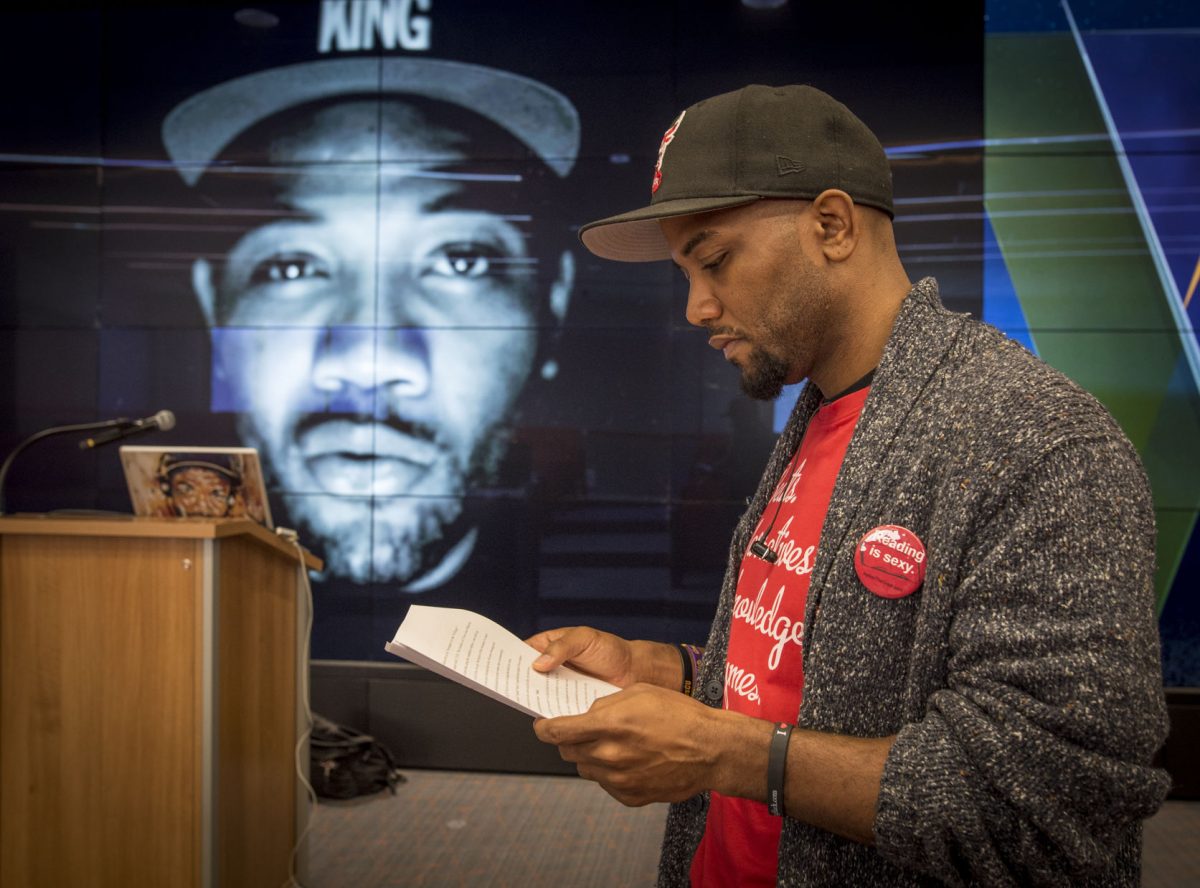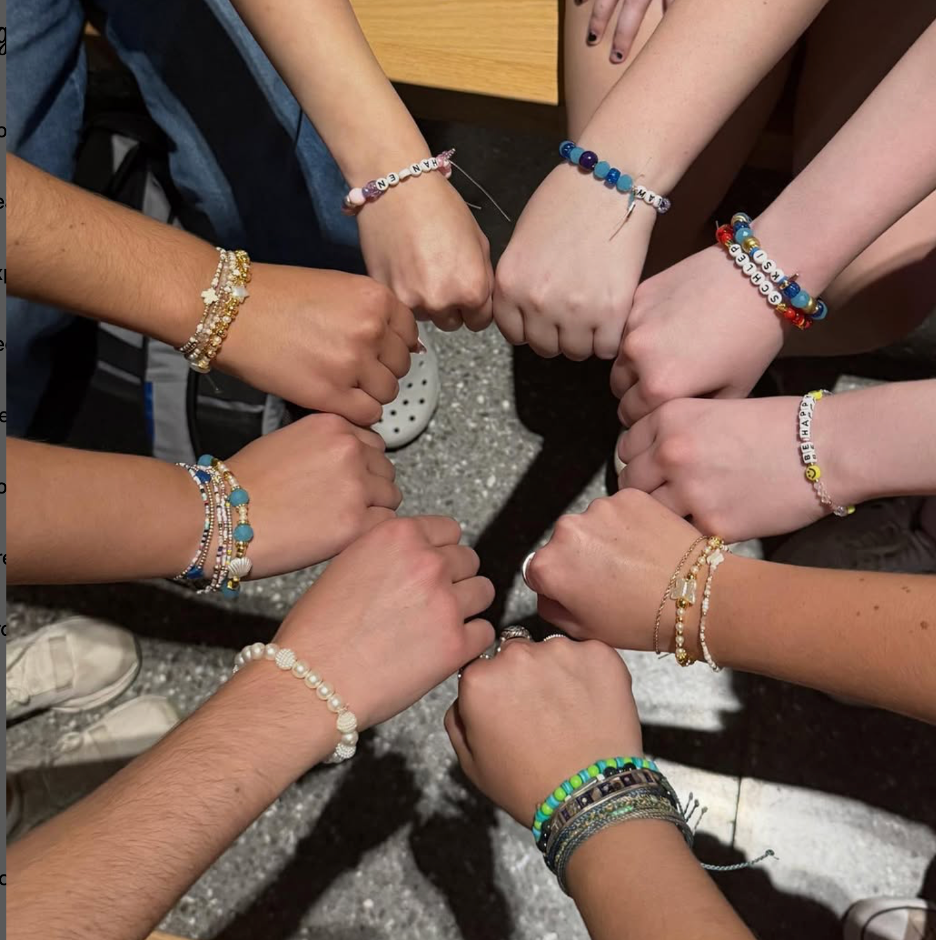“Reading is sexy”, reads the pin fastened to A.D. Carson’s cardigan, as he sits drinking coffee during his open office hours in the Cooper Library Starbucks. Carson is a doctoral candidate at Clemson University who shook the world of Ph.D. research by releasing a 34-track rap album as his dissertation.
The album, titled “Owning My Masters: The Rhetorics of Rhymes and Revolutions,” delves into themes of identity, racism and inequality in songs that Carson wrote and produced during his time at Clemson.
“I write, record and mix on a daily or weekly basis,” Carson explained. “Each semester I finished with a mix tape of those recordings. So, after the seventh mix tape, I kind of composed the album’s final playlist.”
Carson studies rhetoric, communications and information design. As such, when forming his dissertation, Carson felt an obligation to demonstrate, as opposed to tell.
“I think that it’s really important for me, rather than write about rap’s rhetorical functions, to demonstrate them by composing and producing a rap album to do those things that I would otherwise just write about,” Carson said.
The dissertation defense took place on Feb. 24 and Carson performed five of his 34 tracks: “Dissertation,” “Willie Revisited,” “Internal Contradiction,” “Good Mourning, America,” and “Familiar.”
When asked why he chose these five, Carson said, “I think that they best represent many of the overarching themes and ways that I would like for people to attempt to engage with the project.”
When listening to Carson’s pieces, it is important to note the Langston Hughes-esque way he weaves other artists’ works into the songs. Carson referred to great artists and activists of the past and present such as Hortense Spillers, Sylvia Wynter, Talib Kweli and Frantz Fanon.
Carson doesn’t only use the work of notable black and African-Americans, but also calls attention to white men and women who have perpetuated racial stereotypes. For example, in “Willie Revisited,” Carson refers to Willie Lynch, a white slave owner from the West Indies. In 1712, he was invited to give a speech to American slave owners in Virginia who were having difficulty controlling their slaves. Lynch’s short address argues that slave owners must pit their slaves against one another. The male against the female; the light skinned against the dark skinned; and the old against the young. If the slaves distrusted one another and depended fully on the white families who owned them, they would be much easier to control. In “Willie Revisited,” Carson uses the line, “How do you make a slave stay a slave? Tell him he can make a slave and make some money while he’s at it. It’s simple and tragic.” Carson refers to the historical use of Lynch’s tactics in the Caribbean, but also to the current state of the United States’ political and social atmospheres. Carson argues that the hierarchies that drive almost all U.S. systems have created a new type of servitude.
To say the dissertation is different from the traditional format would be an understatement. So, what does it add to the body of doctoral research that was previously lacking?
“It places sounds and voices and thoughts that might otherwise be explored by writing about them in a space where they exist side by side,” Carson explained. Carson also describes his process of engaging with the artists that differs from other dissertations.
“In rap, they talk about the cypher or the space where the art happens,” Carson said. “I think one of the things I tried to bring out in the defense is that I wanted to step into that cypher with other artists and imagine being in conversation with the words they use.”
An example of collaboration within this cypher can be seen in one of the five songs performed at the dissertation: “Good Mourning, America.” Carson pulls influences from Ralph Waldo Emerson’s “Invisible Man” throughout the song, which refers to the invisibility many black Americans faced in the 1950s. He begins the piece by saying, “The grotesque fantasy of the shrinking so-called majority, America’s nightmare, is slowly transitioning from somnolent slumber to a waking state akin to sleepwalking.”
Carson’s collaboration with Ellison is in reference to “Invisible Man,” where black men and women tiptoed through life so as not to awaken the sleeping ones in White America. Ellison says that one of the most dangerous things to do in the world is wake a sleepwalker.
Using this idea and plunging it into the present, Carson calls this the period of America’s awakening. The body America has seen as pristine for so long due to the repetitive removal of black and brown bruises is not so anymore. America is burning, and sleepwalking is no longer an option.
After such arduous writing and producing, Carson finally had to release his album. When asked about the most difficult part of the whole process, Carson said, “I think the hardest part is really after recording a song and letting it go. It’s leaving it up to people’s scrutiny or interpretation or dismissal; and at that point it’s a kind of vulnerability.”
While the album release may have been difficult for Carson, the finished product is highly recommended for those caught up in the political mumbo-jumbo of false news and presidential nonsense. It not only asks questions about the more difficult issues plaguing American society surrounding race, gender and poverty, but also attempts to answer them.
Categories:
Clemson student AD Carson utilizes rap album for Ph.D. dissertation
Wesley Skidmore, Contributor
March 6, 2017
Courtesy of Ken Scar // Flickr
Clemson University doctoral candidate A.D. Carson prepares to defend his dissertation in the Watt Family Innovation Center auditorium, Feb. 24, 2017. Carson, a candidate in Clemson’s Rhetorics, Communication, and Information Design (RCID) Ph.D. program, produced a 34-track rap album titled “Owning my Masters: The Rhetorics of Rhymes and Revolutions” as opposed to the traditional written dissertation. (Photo by Ken Scar)
0
Donate to The Tiger
Your donation will support the student journalists of Clemson University. Your contribution will allow us to purchase equipment and cover our annual website hosting costs.
More to Discover









